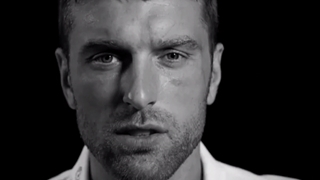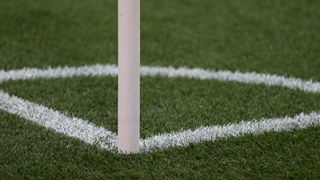
The rules and regulations surrounding the management of head injury and concussion are based upon a consensus statement, reached after the latest international and inter-sport meeting to discuss these issues. This was held in Zurich in 2012, and the findings of that group were published in 2013.
For reference please see: Consensus statement on concussion in sport: the 4th International Conference on Concussion in Sport held in Zurich, November 2012: Br J Sports Med 2013;47:5 250-258.
Following on from this, the guidelines for management of head injury and concussion in football have been harmonised with those from the consensus meeting.
Emergency Action Plan (EAP)
There should be an EAP in place for management of injury (which includes head injury) for stadia and training grounds. It should include a map of the facility, with emergency exit points, and ambulance siting/arrival points, clearly marked. This should be made available to any visiting teams’ staff either prior to arrival via intranet, internet, or email, or given to the medical professional in charge of the visiting team on arrival at the venue. A clear communication pathway for summoning emergency services must be noted. All local hospital telephone numbers, and hosting club staff contact details, should be included.
Pre-season screening
- Professional players should undergo baseline neuro-psychological testing at the start of each season. This should form part of the normal screening and profiling process undertaken in the pre-season conditioning period.
- The recommendation is to use a web based neuro-psychological testing programme to profile players at an appropriate time during pre-season. An alternative method is to carry out a SCAT 3 assessment.
- This pre-season testing acts as a baseline in the event of a player sustaining a head injury. The effects of this injury and the recovery process can be monitored by regular re-testing using the same method utilised during pre-season screening. This forms part of the advice on return to play (see below).
- Any player with two or more documented concussive episodes in previous seasons should undergo mandatory detailed neuro-psychological testing as well as the routine SCAT 3 assessment.
Head injury management
- If a head injury occurs, the medical team will enter the field to attend to the player. The referee will signal assent in a match situation.
- The medical staff will assess the injured player. If there has been a confirmed or suspected period of loss of consciousness, the player must be removed from the field of play, and not be allowed to return. If here is any doubt as to the course of events, elucidation may be sought from officials or other players. In the event that there is video replay available pitch-side or in the players’ tunnel, this could be used to clarify the course of events.
- Where there is a head injury, but no loss of consciousness, an on-field or touchline assessment will take place using the Pocket Concussion Recognition Tool (Pocket CRT). This should be a standard part of any pitch-side medical kit. The decision whether the player is removed from the field should be made by the attending doctor.
- If there is any suspicion of the payer having sustained a concussion, the player must be removed from the field of play, and not allowed to return.
- If the player has been removed from the field of play because of a suspected or confirmed concussion, they should be monitored until deemed fit and able to leave the venue. If in doubt, further opinion from local hospital services should be sought via the accident and emergency department.
- If allowed home, the player should not be allowed to drive, and should not be left alone, but with a responsible adult who is instructed that should there be any deterioration in the players’ condition, urgent medical attention must be sought.
- The medical attendant must ensure that the responsible adult is in possession of all contact details of that medical attendant.
- If there is no medical attendant present, and if there is any suspicion of concussion, the player must be removed from the field of play and not allowed to return. In this case medical advice should be sought from the accident and emergency department.
Return to play guidelines following concussion:
Concussion is a brain injury. There is no blood test or scan currently available that can diagnose it. The diagnosis is made on the basis of history and examination. Return to play after head injury/concussion should be treated as with any other injury. A period of rest, which, in this case, includes mental activity, should be followed by a gradual return to play, closely monitored by medical staff. Serial evaluations using SCAT 3, or whichever pre-season assessment was employed, should be used as an objective adjunct of measure of recovery.
- The player should undergo a period of physical and mental rest for at least 24 hours after the injury (which includes the playing of video games or similar).
- The physical return to play ‘steps’ should follow the course shown below, only progressing to the next step if there are no persistent/recurrent concussion symptoms, such as such as headache, feeling in a fog, disturbed or blurred vision, sleep disturbance, or unusual emotional behaviour
- This process should also include serial SCAT 3 assessments, or assessment with whichever pre-season neuro-psychological assessment tool was employed.
- The chosen neuro-psychological testing should be carried out every 48 hours after the injury, until return to play, and should show a gradual return to baseline. Clinical assessment should be made daily, whilst following the rehabilitation programme as outlined below.
- Any recurrence or persistence of concussion symptoms such as headache, feeling in a fog, disturbed or blurred vision, sleep disturbance, or unusual emotional behaviour are signs that the player should return to the previous ‘return to play step’.
- An improvement in the serial assessments, both clinical and neuro-psychological, whilst increasing the players’ work load, is an indication that they are ready to progress to the next step.
The physical activity ‘steps’ of rehabilitation should follow this protocol.
a) No activity
b) Light aerobic exercise
c) Sports specific exercise
d) Non-contact training drills
e) Full contact practice
f) Return to play
Each of these steps takes at least one day - The player should not be allowed to return to play for at least 6 days after the injury (it often takes longer than this) and in strict accordance with the return to play guidelines (above). This will include a return to baseline of the SCAT 3, or web-based, neuro-psychological criteria. A baseline profile will be available from the pre-season assessment.
- The player should be examined, and receive the ‘all clear’ from the club medical officer before returning to play.
- If progression back to full fitness is delayed in any way, urgent specialist advice should be sought for further assessment.
- Any player who has suffered two or more concussive episodes during a season should be discussed with a suitably qualified neurological specialist prior to return to play.
Resources
- SCAT 3 form
- Pocket Concussion Recognition Tool (Pocket CRT) form
- CogSport web based assessment
- ImPACT web based assessment
Position and consensus statements:
- Faculty of Sport and Exercise Medicine
- Consensus statement on concussion in sport: the 4th International Conference on Concussion in Sport held in Zurich, November 2013
Br J Sports Med 2013;47:250-258 doi:10.1136/bjsports-2013-092313





